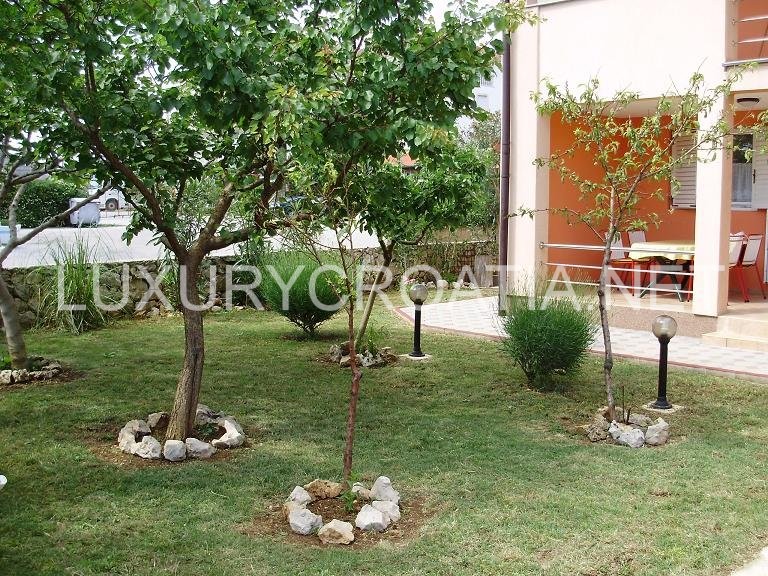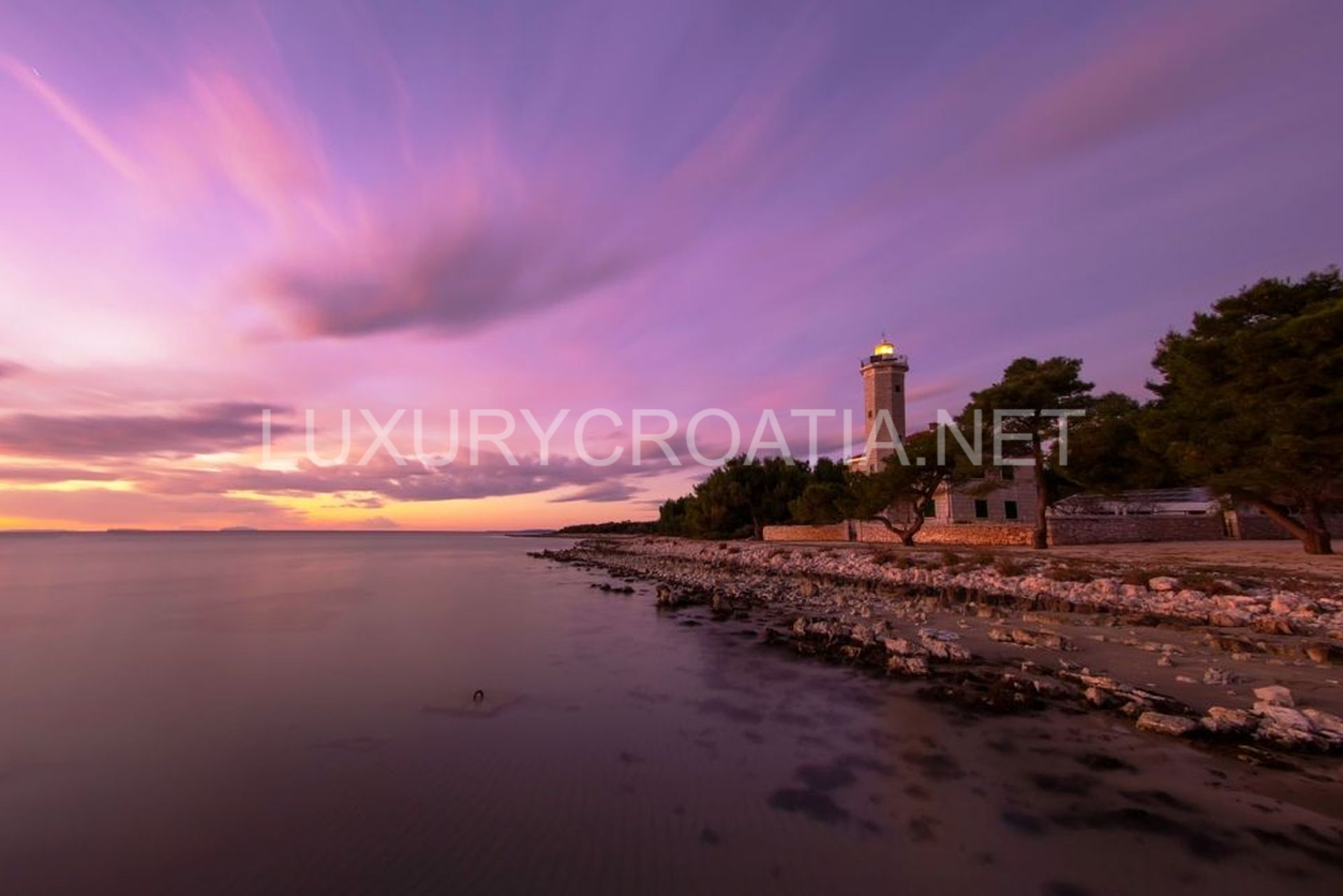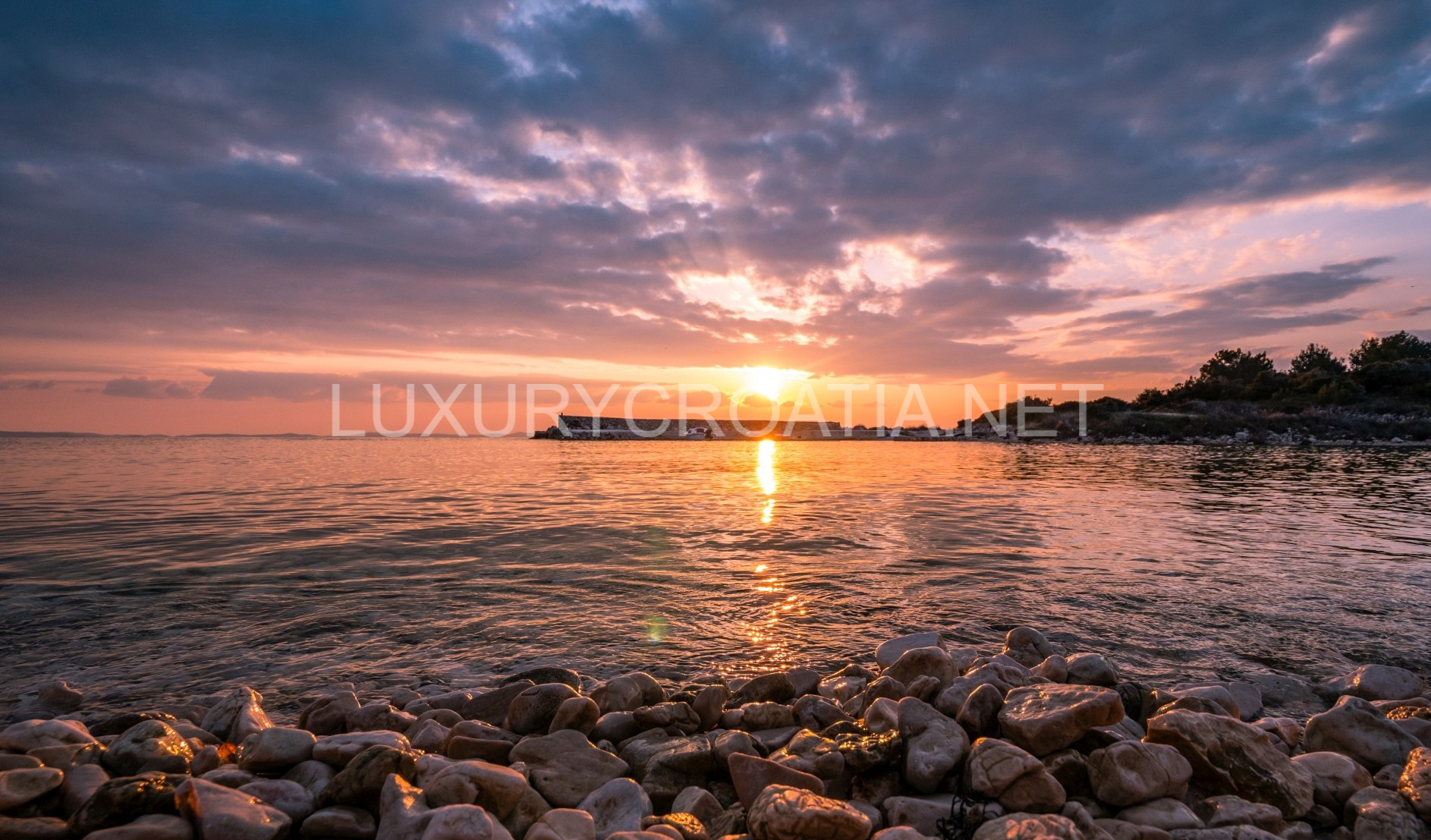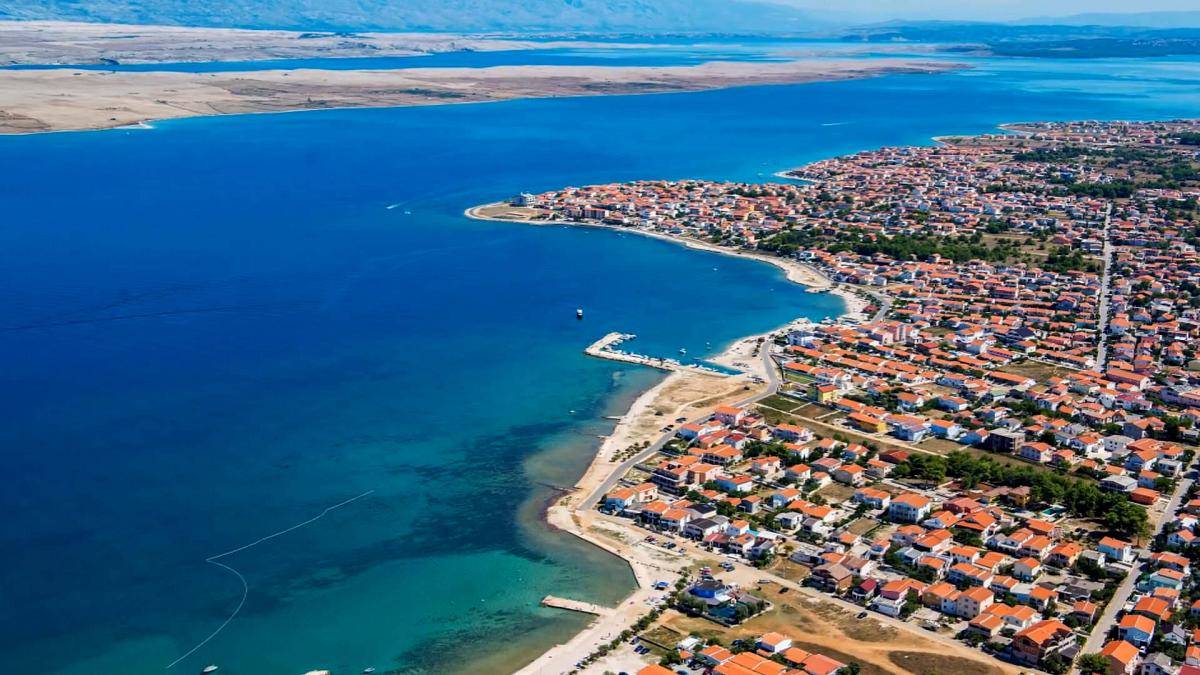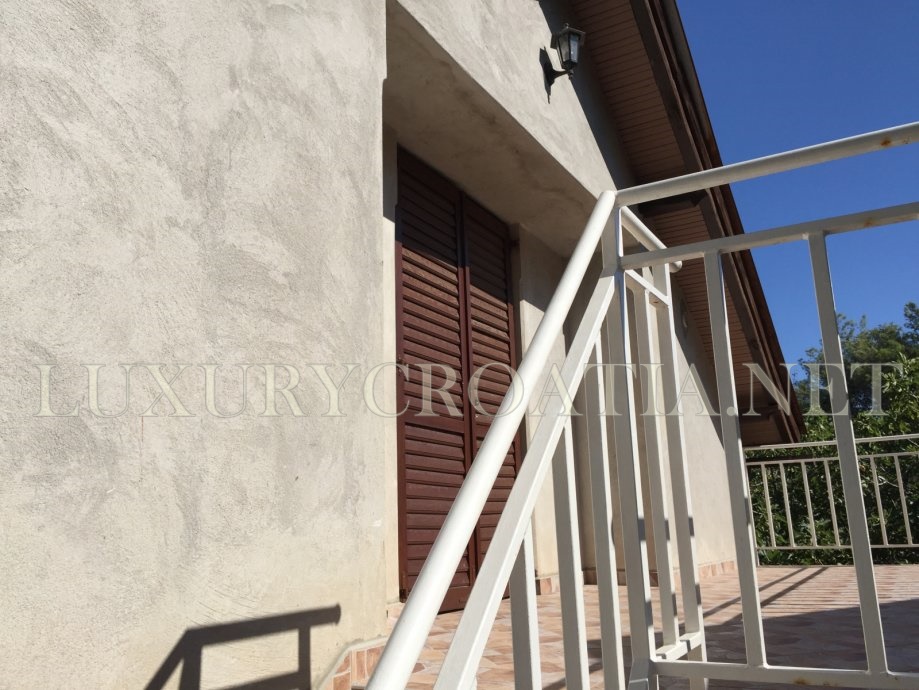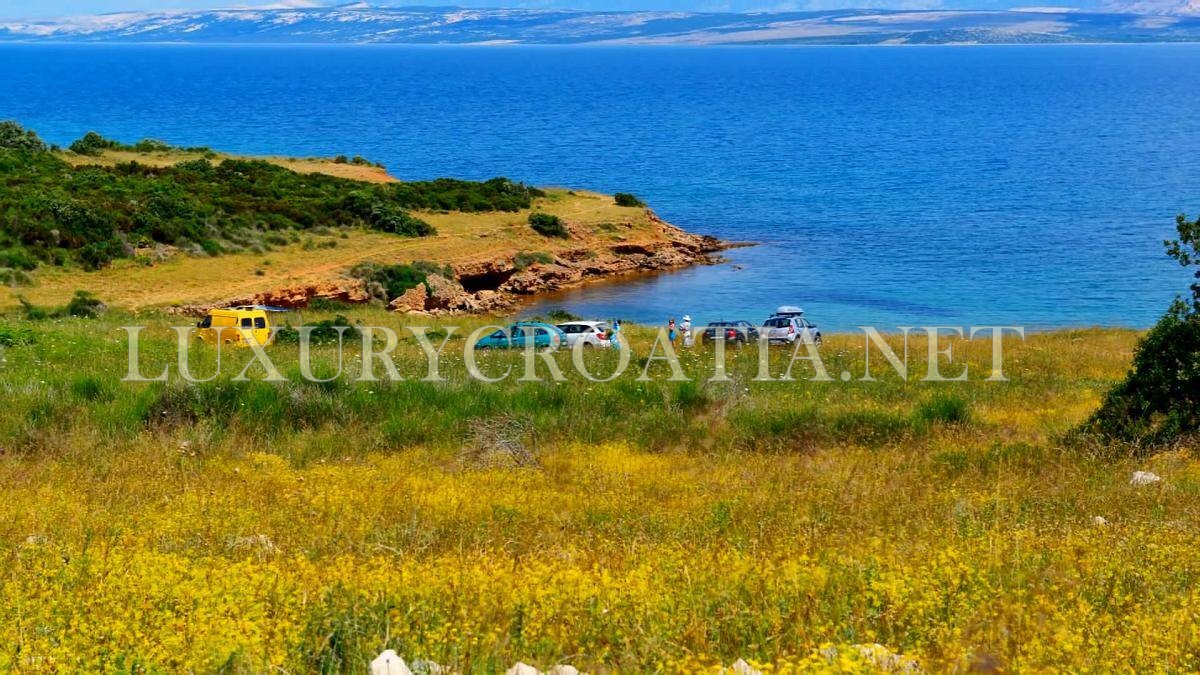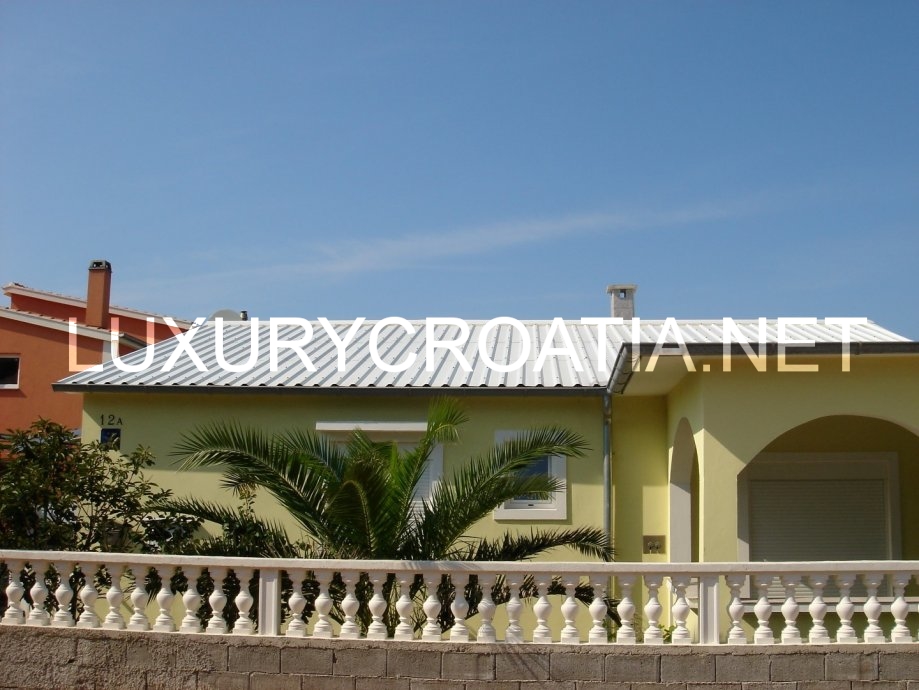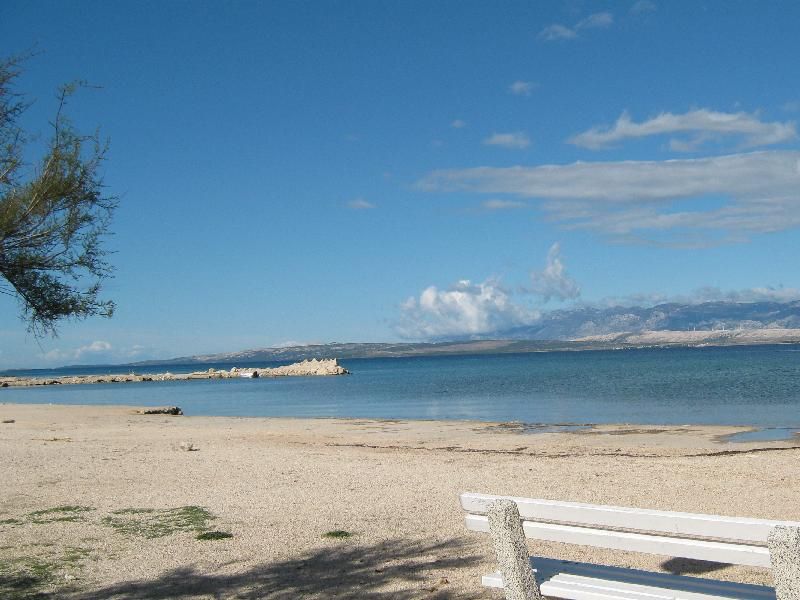House for sale near sea, Vir, Zadar
Property Details:
- Categories: House, SOLD
- Square meters: 200
- Features: 3% Agency Commission
- Air Conditioning: A/C
About this Property:
(H-VI-ZD-IK)
House for sale near sea, Vir, Zadar
Fully decorated house, separate entrance to the upper floors with two apartments, each with its own terrace, enclosed stairway. Ground floor three bedroom apartment with two bathrooms and two terraces. Three parking spaces, air conditioning, close to shopping center, 80 meters from the beach, garden. Living space 200 m2. Plot 300. 7 bedrooms total.
SOLD!
Zadar is a city in Croatia on the Adriatic Sea. It is the centre of Zadar county and the wider northern Dalmatian region. Zadar faces the islands of Ugljan and Pašman, from which it is separated by the narrow Zadar Strait. The promontory on which the old city stands used to be separated from the mainland by a deep moat which has since become a landfill. The harbor, to the north-east of the town, is safe and spacious. Zadar is the seat of a Catholic archbishop.
zadar3 zadar_cathedral zadar_e
The Zadar region is the northernmost part of Dalmatia, its gate of welcome to all those who travel from the north of the Adriatic. It is full of contrasts, rich in historic heritage and breathtakingly beautiful nature. The first, and therefore perhaps the most intense experience of these parts, are the intense colours, that particular harmony of the vivid blue of the sea and over it the dark green of pine trees or olive groves that descend all the way to the shore. And to all that the brilliant white of the Dalmatian stone must be added – it forms the beaches either in slabs or broken down into gravel or pebbles, attracting numerous tourists…
Zadar is an ancient Mediterranean port city. The old town, surrounded by walls and towers on a peninsula, with a new, urban part is connected by a bridge, a symbol of the city.
Built on Roman urban principles, where there are several major longitudinal streets traversed by a greater number of latitudinal streets, give the city a rectangular shape. The old town is a treasure trove of archaeological treasures and monuments to the ancient, medieval and Renaissance periods. This is visible by a number of sacral and architectural monuments – the church of sv. Donat [St. Donatus] where every summer the sounds of Zadar’s musical evenings echo, the Roman Forum near the main square, Kalelarga – the longest and widest street, the Cathedral of sv. Stošije [St. Anastasia], an Archaeological Museum with its exceptional treasures and many other monuments of cultural and historical heritage (town gate, Arsenal, churches, museums…).
zadar_church_st.anastazia Zadar_2 zadar_valjda
In a city with the most beautiful sunset, in a maritime archipelago facing a multitude of islands and islets, which protect the city from the strong winds, enjoy the symphony of the Sea Organ and magical urban light installation Pozdrav suncu [Greeting the Sun] near the new harbour for cruise ships.
Zadar is a powerful cultural and economic city whose life is comfortable all year round, but shows all its splendour in the summer. Visit the traditional events or contemporary events like the full moon nights, Zadar dreams, Millennium jump, Kalelarga art… Enjoy the Mediterranean cuisine, taste the sweet Maraschino cherry liqueur, and take a swim from one of the sandy beaches in the Zadar area!
Dalmatia’s centre is 3000-year-old Zadar, a city with the largest researched Romanforum on the Croatian side of the Adriatic and unforgettable Romanesquechurches like St. Donatus, St. Anastasia and St. Chrisogonus. Nearby Nin (the oldest Croatian royal city) boasts the smallest cathedral in the world (the Church of the Holy Cross measures but 36 paces!). The region of Zadar tells the story of the sources of Croatian cultural heritage better than any book.
In antiquity, Iadera and Iader, the much older roots of the settlement’s names were hidden, the names being most probably related to a hydrographical term. It was coined by an ancient Mediterranean people and their Pre-Indo-European language. They transmitted it to later settlers, the Liburnians. The name of the Liburnian settlement was first mentioned by a Greek inscription from Pharos (Stari grad) on the island of Hvar in 384 BC, where the citizens of Zadar were noted as Ίαδασινοί (Iadasinoi). According to the Greek source Periplus of Pseudo-Scylax the city was Ίδασσα (Idassa), probably a vulgar Greek form of the original Liburnian name.
zadar_gullet zadar_nightlife
During Antiquity the name was often recorded in sources in Latin in two forms: Iader in the inscriptions and in the writings of classic writers, Iadera predominantly among the late Antiquity writers, while usual ethnonyms were Iadestines and Iadertines. The accent was on the first syllable in both Iader and Iadera forms, which influenced the early-Medieval Dalmatian language forms Jadra, Jadera and Jadertina, where the accent kept its original place.
In the Dalmatian language, Jadra (Jadera) was pronounced Zadra (Zadera), due to the phonetic transformation of Ja- to Za-. That early change was also reflected in the Croatian name Zadar, developed from Zadъrъ by vocalizations of the semi-vowel and a shift to male gender. An ethnonym graphic Jaderani from the legend of St. Krševan in 9th century, was identical to the initial old-Slavic form Zadъrane, or Renaissance Croatian Zadrani.
The Dalmatian names Jadra, Jadera were transferred to other languages; in Venetian language Jatara (hyper urbanism in 9th century) and Zara, Tuscan Giara, Latin Diadora (Constantine VII in DAI, 10th century), Old French Jadres (Geoffroy de Villehardouinin in the chronicles of the Fourth Crusade in 1202), Arabic Jadora (Al-Idrisi, 12th century), Iadora (Guido, 12th century), Spanish Jazara, Jara, Sarra (14th century) and the others.
Zadar_1 zadar_solar_lightsw
Jadera became Zara when it fell under the authority of the Republic of Venice in the 15th century. Zara was later used by the Austrian Empire in the 19th century, but it was provisionally changed to Zadar/Zara from 1910 to 1920; from 1920 to 1947 the city became part of Italy as Zara, and finally was named Zadar later on.
The district of present day Zadar has been populated since prehistoric times. The earliest evidence of human life comes from the Late Stone Age, while numerous settlements have been dated as early as the Neolithic. Before the Illyrians, the area was inhabited by an ancient Mediterranean people of a pre-Indo-European culture. They assimilated with the Indo-Europeans who settled between the 4th and 2nd millennium BC into a new ethnical unity, that of the Liburnians. Zadar was a Liburnian settlement, laid out in the 9th century BC, built on a small stone islet and embankments where the old city stands and tied to the mainland by the overflown narrow isthmus, which created a natural port in its northern strait.
zadar_sea_organ zadar_stosija
Zadar gained its urban structure in Roman times; during the time of Julius Caesar and Emperor Augustus, the town was fortified and the city walls with towers and gates were built. On the western side of the town were the forum, the basilica and the temple, while outside the town were the amphitheatre and cemeteries. The aqueduct which supplied the town with water is partially preserved. Inside the ancient town, a medieval town had developed with a series of churches and monasteries being built.
During the Middle Ages, Zadar fully gained its urban aspect, which has been maintained until today. In the 16th century, Venice fortified the town with a new system of defensive walls on the side facing land. In the first half of the 16th century, architectural building in the Renaissance style was continued. Defensive trenches (Foša) were also built, which were completely buried during the Italian occupation. In 1873 under Austrian rule the ramparts of Zadar were converted from fortifications into elevated promenades commanding extensive seaward and landward views, wall lines thus being preserved; of its four old gates one, the Porta Marina, incorporates the relics of a Roman arch, and another, the Porta di Terraferma, was designed in the 16th century by the Veronese artist Michele Sanmicheli. In the bombardments during the Second World War entire blocks were destroyed, but some structures survived.
zadar_street_life Zadar_PortaTerraferma
Most important landmarks:
Roman Forum – the largest on the eastern side of the Adriatic, founded by the first Roman Emperor Augustus, as shown by two stone inscriptions about its completion dating from the 3rd century.
Most Roman remains were used in the construction of the fortifications, but two squares are embellished with lofty marble columns; a Roman tower stands on the eastern side of the town; and some remains of a Roman aqueduct may be seen outside the ramparts.
The chief interest of Zadar lies in its churches.
St Donatus’ Church – a monumental round building from the 9th century in pre-Romanesque style, traditionally but erroneously said to have been erected on the site of a temple of Juno. It is the most important preserved structure of its period in Dalmatia; the massive dome of the rotunda is surrounded by a vaulted gallery in two stories which also extends around the three apses to the east. The church treasury contains some of the finest Dalmatian metalwork; notably the silver ark or reliquary of St Simeon (1380), and the pastoral staff of Bishop Valaresso (1460).
St. Anastasia’s Cathedral (Croatian: Sv. Stošija), basilica in Romanesque style built in the 12th to 13th century (high Romanesque style), the largest cathedral in Dalmatia.
The churches of St. Chrysogonus and St. Simeon are also in the Romanesque style.
St. Krševan’s Church – monumental Romanesque church of very fine proportions and refined Romanesque ornaments.
St. Elijah’s Church (Croatian: Sv. Ilija)
St. Francis’ Church, gothic styled church, site of the signing of the Zadar Peace Treaty 1358
Five Wells Square
St. Mary’s Church, which retains a fine Romanesque campanile from 1105, belongs to a Benedictine Convent founded in 1066 by a noblewoman of Zadar by the name of Cika with The Permanent Ecclesiastical Art Exhibition “The Gold and Silver of Zadar”
Other architectural landmarks:
Citadel – built in 1409, southwest of the Land gate, it has remained the same to this day.
The Land Gate – built to a design by the Venetian architect Michele Sanmicheli in 1543
The unique sea organ
The Great Arsenal
Among the other chief buildings are the Loggia del Comune, rebuilt in 1565, and containing a public library; the old palace of the priors, now the governor’s residence; and the episcopal palaces.

